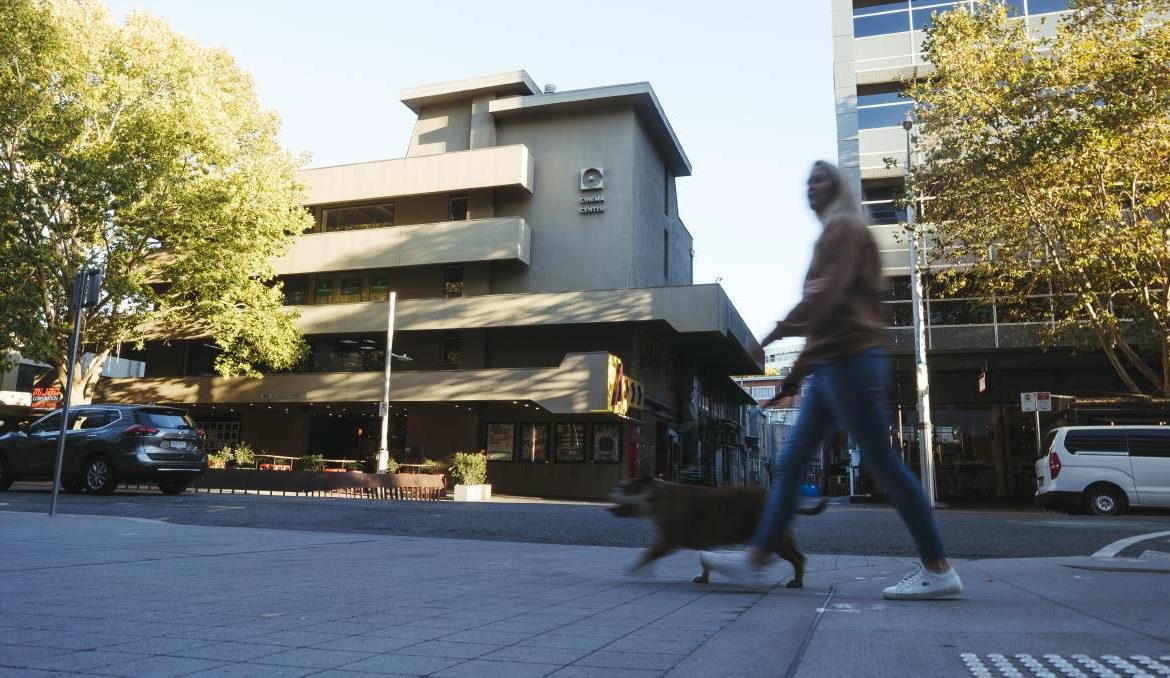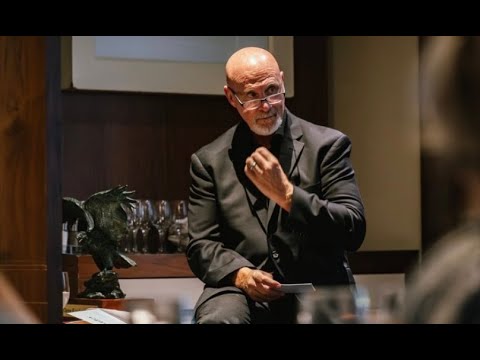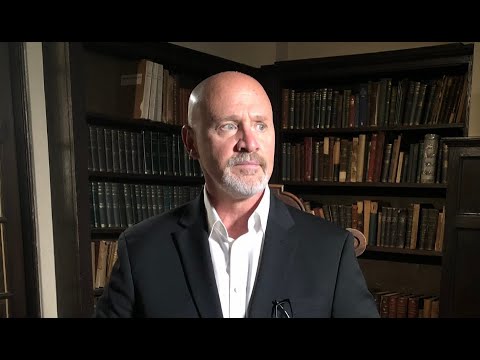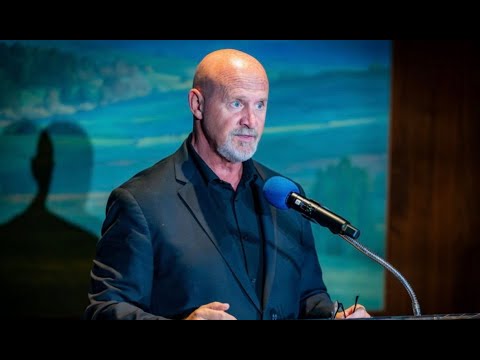news, latest-news, act heritage council, enrico taglietti, taglietti building, canberra cinema, taglietti cinema center
The landmark Cinema Center on Bunda Street designed by esteemed architect Enrico Taglietti will be protected after it was added to the ACT’s heritage register. The ACT Heritage Council found the Cinema Center had made an important contribution to the territory’s cultural life in the 20th century. In its decision to register the building, the council noted the innovative architecture and the building’s strong association with cinema in the territory. “Built in 1965 to accommodate restaurants, retail, a gallery, offices and an independent cinema, Cinema Center was a distinctively modern cultural hub and well-known meeting place in the city,” the council said. “The purpose built cinema (Cinema Center) located in the building’s basement, art gallery on the first floor, and variety of retail and dining options provided at the ground-floor level of the building, provided a cosmopolitan entertainment experience, previously unavailable in Canberra at the time.” The council pointed to the links between the building, Dr Darrell Killen – a cinema enthusiast who led the development of the site – and architect Dr Taglietti. “[Dr Taglietti] played a significant role in Canberra’s cultural history, being one of the most critically acclaimed architects to practise in the capital,” the council said. Dr Taglietti, who designed other famous Canberra buildings including the Dickson Library and several government primary schools, died in 2019 aged 93. Dr Taglietti once described Canberra as “the dream of any modern architect”. “A city without towers, without golden domes, without cathedrals, a city without a past,” he said. The Heritage Council also found the use of Vierendeel trusses in the Cinema Center to create the free-span basement area demonstrated innovative architectural work. It was perhaps the first building of its kind in Australia. The registration includes the free-standing building, including its balcony forms, entry way, open-plan basement and Vierendeel trusses. The original metal letter and logo “Cinema Center” sign will also be protected. The cinema opened on October 4, 1966 with the Canberra premiere of Dr Zhivago. The film was also the last to be shown in the basement cinema before the building was converted into a nightclub. The building sold in 2017 to Beach Street Enterprises for $9.8 million. Then ACT Heritage Council chairman David Flannery told The Canberra Times last year the owners wanted to convert the space into a multi-level hotel and event venue, but there was no threat of demolition. “The owners wish to retain the building … and keep it within their family,” Mr Flannery said in November. “Finding a new use for an old building is in fact a very good way to maintain it in the future. There’s lots of examples of places in Canberra that can’t be used any more for the use for which [they were] built.” READ MORE: Meanwhile, the ACT Heritage Council rejected an application to register the original Canberra aerodrome in Dickson, finding the place was not likely to have heritage significance. “The physical fabric relating to the past land use is all but erased with the only known remains relating to one partially intact lockspit,” the council said. “It is so altered that it can no longer provide evidence for its meaning.” The National Trust ACT had nominated the aerodrome, which was the site of the city’s first aviation fatalities. Our journalists work hard to provide local, up-to-date news to the community. This is how you can continue to access our trusted content:
/images/transform/v1/crop/frm/35sFyBanpD896MKnAH5FRtj/81f62c86-8ae2-479f-8594-ced41ba29bc5.jpg/r3_278_4998_3100_w1200_h678_fmax.jpg
The landmark Cinema Center on Bunda Street designed by esteemed architect Enrico Taglietti will be protected after it was added to the ACT’s heritage register.
The ACT Heritage Council found the Cinema Center had made an important contribution to the territory’s cultural life in the 20th century.
In its decision to register the building, the council noted the innovative architecture and the building’s strong association with cinema in the territory.
“Built in 1965 to accommodate restaurants, retail, a gallery, offices and an independent cinema, Cinema Center was a distinctively modern cultural hub and well-known meeting place in the city,” the council said.
“The purpose built cinema (Cinema Center) located in the building’s basement, art gallery on the first floor, and variety of retail and dining options provided at the ground-floor level of the building, provided a cosmopolitan entertainment experience, previously unavailable in Canberra at the time.”
The council pointed to the links between the building, Dr Darrell Killen – a cinema enthusiast who led the development of the site – and architect Dr Taglietti.
“[Dr Taglietti] played a significant role in Canberra’s cultural history, being one of the most critically acclaimed architects to practise in the capital,” the council said.
As it was then: the Cinema Center building in June, 1971. Picture: Canberra Times
Dr Taglietti, who designed other famous Canberra buildings including the Dickson Library and several government primary schools, died in 2019 aged 93.
Dr Taglietti once described Canberra as “the dream of any modern architect”.
“A city without towers, without golden domes, without cathedrals, a city without a past,” he said.
The Heritage Council also found the use of Vierendeel trusses in the Cinema Center to create the free-span basement area demonstrated innovative architectural work. It was perhaps the first building of its kind in Australia.
The registration includes the free-standing building, including its balcony forms, entry way, open-plan basement and Vierendeel trusses. The original metal letter and logo “Cinema Center” sign will also be protected.
The cinema opened on October 4, 1966 with the Canberra premiere of Dr Zhivago. The film was also the last to be shown in the basement cinema before the building was converted into a nightclub.
The building sold in 2017 to Beach Street Enterprises for $9.8 million.
Architect Enrico Taglietti with a model of the iconic Cinema Center building in 2012. Picture: Rohan Thomson
Then ACT Heritage Council chairman David Flannery told The Canberra Times last year the owners wanted to convert the space into a multi-level hotel and event venue, but there was no threat of demolition.
“The owners wish to retain the building … and keep it within their family,” Mr Flannery said in November.
“Finding a new use for an old building is in fact a very good way to maintain it in the future. There’s lots of examples of places in Canberra that can’t be used any more for the use for which [they were] built.”
“The physical fabric relating to the past land use is all but erased with the only known remains relating to one partially intact lockspit,” the council said.
“It is so altered that it can no longer provide evidence for its meaning.”
The National Trust ACT had nominated the aerodrome, which was the site of the city’s first aviation fatalities.
Our journalists work hard to provide local, up-to-date news to the community. This is how you can continue to access our trusted content:







